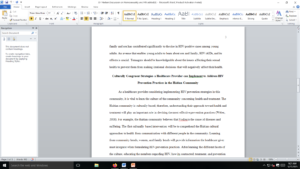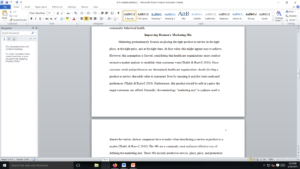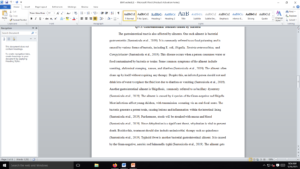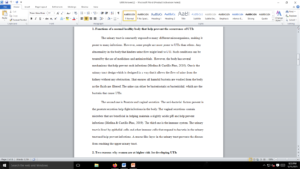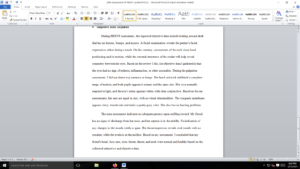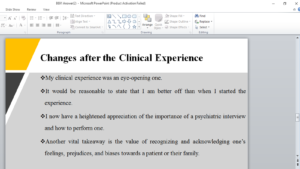Develop a hypothetical health promotion plan, 3-4 pages in length, addressing a specific health concern for an individual or a group living in the community that you identified from the topic list provided.
- Bullying.
- Teen Pregnancy.
- LGBTQIA + Health.
- Sudden Infant Death (SID).
- Immunization.
- Tobacco use (include all: vaping, e-cigarettes, hookah, chewing tobacco, and smoking) cessation.
Introduction
Historically, nurses have made significant contributions to community and public health with regard to health promotion, disease prevention, and environmental and public safety. They have also been instrumental in shaping public health policy. Today, community and public health nurses have a key role in identifying and developing plans of care to address local, national, and international health issues. The goal of community and public health nursing is to optimize the health of individuals and families, taking into consideration cultural, racial, ethnic groups, communities, and populations. Caring for a population involves identifying the factors that place the population’s health at risk and developing specific interventions to address those factors. The community/public health nurse uses epidemiology as a tool to customize disease prevention and health promotion strategies disseminated to a specific population. Epidemiology is the branch of medicine that investigates causes of various diseases in a specific population (CDC, 2012; Healthy People 2030, n.d.).
As an advocate and educator, the community/public health nurse is instrumental in providing individuals, groups, and aggregates with the tools that are essential for health promotion and disease prevention. There is a connection between one’s quality of life and their health literacy. Health literacy is related to the knowledge, comprehension, and understanding of one’s condition along with the ability to find resources that will treat, prevent, maintain, or cure their condition. Health literacy is impacted by the individual’s learning style, reading level, and the ability understand and retain the information being provided. The individual’s technology aptitude and proficiency in navigating available resources is an essential component to making informed decisions and to the teaching learning process (CDC, 2012; Healthy People 2030, n.d.).
It is essential to develop trust and rapport with community members to accurately identify health needs and help them adopt health promotion, health maintenance, and disease prevention strategies. Cultural, socio-economical, and educational biases need to be taken into consideration when communicating and developing an individualized treatment and educational plan. Social, economic, cultural, and lifestyle behaviors can have an impact on an individual’s health and the health of a community. These behaviors may pose health risks, which may be mitigated through lifestyle/behaviorally-based education. The environment, housing conditions, employment factors, diet, cultural beliefs, and family/support system structure play a role in a person’s levels of risk and resulting health. Assessment, evaluation, and inclusion of these factors provide a basis for the development of an individualized plan. The health professional may use a genogram or sociogram in this process.
What is a genogram? A genogram, similar to a family tree, is used to gather detailed information about the quality of relationships and interactions between family members over generations as opposed to lineage. Gender, family relationships, emotional relationships, lifespan, and genetic predisposition to certain health conditions are components of a genogram. A genogram, for instance, may identify a pattern of martial issues perhaps rooted in anger or explain why a person has green eyes.
What is a sociogram? A sociogram helps the health professional to develop a greater understanding of these factors by seeing inter-relationships, social links between people or other entities, as well as patterns to identify vulnerable populations and the flow of information within the community.
Preparation
The first step in any effective project or clinical patient encounter is planning. This assessment provides an opportunity for you to plan a hypothetical clinical learning experience focused on health promotion associated with a specific community health concern or health need. Such a plan defines the critical elements of who, what, when, where, and why that establish the foundation for an effective clinical learning experience for the participants. Completing this assessment will strengthen your understanding of how to plan and negotiate individual or group participation.
To prepare for the assessment, consider a various health concern or health need that you would like to be the focus of your plan from the topic list provided, the populations potentially affected by that concern or health need, and hypothetical individuals or groups living in the community. Then, investigate your chosen concern or need and best practices for health improvement, based on supporting evidence.
For this assessment, you will propose a hypothetical health promotion plan addressing a particular health concern or health need affecting a fictitious individual or group living in the community. The hypothetical individual or group of your choice must be living in the community; not in a hospital, assistant living, nursing home, or other facility. You may choose any health issues or need from the list provided in the instructions.
In the Assessment 4, you will simulate a face-to-face presentation of this plan to the individual or group that you have identified.
Please choose one of the topics below:
- Bullying.
- Teen Pregnancy.
- LGBTQIA + Health.
- Sudden Infant Death (SID).
- Immunizations.
- Tobacco use (include all: vaping e-cigarettes, hookah, chewing tobacco, and smoking) cessation. (MUST address all tobacco products).
Instructions
Health Promotion Plan
- Choose a specific health concern or health need as the focus of your hypothetical health promotion plan. Then, investigate your chosen concern or need and best practices for health improvement, based on supporting evidence.
- Bullying.
- Teen Pregnancy.
- LGBTQIA + Health.
- Sudden Infant Death (SID).
- Immunizations.
- Tobacco use (include all: vaping e-cigarettes, hookah, chewing tobacco, and smoking) cessation. (MUST address all tobacco products).
- Create a scenario as if this project was being completed face-to-face.
- Identify the chosen population and include demographic data (location, lifestyle, age, race, ethnicity, gender, marital status, income, education, employment).
- Describe in detail the characteristics of your chosen hypothetical individual or group for this activity and how they are relevant to this targeted population.
- Discuss why your chosen population is predisposed to this health concern or health need and why they can benefit from a health promotion educational plan.
- Based on the health concern for your hypothetical individual or group, discuss what you would include in the development of a sociogram. Take into consideration possible social, economic, cultural, genetic, and/or lifestyle behaviors that may have an impact on health as you develop your educational plan in your first assessment. You will take this information into consideration when you develop your educational plan in your fourth assessment.
- Identify their potential learning needs. Collaborate with the individual or group on SMART goals that will be used to evaluate the educational session (Assessment 4).
- Identify the individual or group’s current behaviors and outline clear expectations for this educational session and offer suggestions for how the individual or group needs can be met.
- Health promotion goals need to be clear, measurable, and appropriate for this activity. Consider goals that will foster behavior changes and lead to the desired outcomes.
Document Format and Length
Your health promotion plan should be 3–4 pages in length.
Supporting Evidence
Support your health promotion plan with peer-reviewed articles, course study resources, and Healthy People 2030 resources. Cite at least three credible sources published within the past five years, using APA format.
Graded Requirements
The requirements outlined below correspond to the grading criteria in the scoring guide, so be sure to address each point. Read the performance-level descriptions for each criterion to see how your work will be assessed.
- Analyze the health concern that is the focus of your health promotion plan.
- Consider underlying assumptions and points of uncertainty in your analysis.
- Explain why a health concern is important for health promotion within a specific population.
- Examine current population health data.
- Consider the factors that contribute to health, health disparities, and access to services.
- Explain the importance of establishing agreed-upon health goals in collaboration with hypothetical participants.
- Organize content so ideas flow logically with smooth transitions; contains few errors in grammar/punctuation, word choice, and spelling.
- Apply APA formatting to in-text citations and references exhibiting nearly flawless adherence to APA format.
- Write with a specific purpose and audience in mind.
- Adhere to scholarly and disciplinary writing standards and APA formatting requirements.
Before submitting your assessment for grading, proofread it to minimize errors that could distract readers and make it difficult for them to focus on the substance of your plan.
Competencies Measured
By successfully completing this assessment, you will demonstrate your proficiency in the following course competencies and scoring guide criteria:
- Competency 1: Analyze health risks and health care needs among distinct populations.
- Analyze a community health concern or need that is the focus of a health promotion plan.
- Competency 2: Propose health promotion strategies to improve the health of populations.
- Explain why a health concern or need is important for health promotion within a specific population.
- Establish agreed-upon health goals in collaboration with hypothetical participants.
- Competency 5: Apply professional, scholarly communication strategies to lead health promotion and improve population health.
- Organize content so ideas flow logically with smooth transitions; contains few errors in grammar/punctuation, word choice, and spelling.
- Apply APA formatting to in-text citations and references exhibiting nearly flawless adherence to APA format.
Requirements: 3-4 pages
Answer preview
The health education plan intends to achieve the following. First, the goal of the health education plan is to increase teenagers’ awareness of the negative physiological effects of tobacco use. In this case, the teenagers will be taught how tobacco use impacts individuals physiologically and socially. Another goal of this plan is to reduce smoking among teenagers aged 13 to17 years by 30% in the first 3 months. Tobacco use is one of the health problems that most adolescents are struggling with, and Baltimore teenagers are exceptional. One of the goals of this health educational plan is to minimize the number of school-going adolescents using tobacco in different ways, including smoking, tobacco chewing, and e-cigarette vaping. The next goal of the health education plan is to reduce the initiation of tobacco use among teenagers aged
[1275 Words]
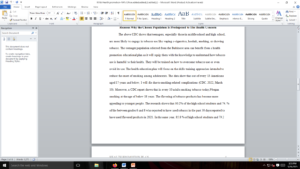
Health promotion plan
